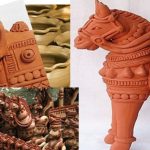
In the world of contemporary art, one name continues to intrigue and captivate both critics and enthusiasts alike: Rogan. This enigmatic artist, shrouded in mystery, has carved a niche for himself with his unique and captivating paintings. In this blog, we embark on a journey to explore the mesmerizing world of Rogan’s art, shedding light on his distinct style and the profound impact of his work.




